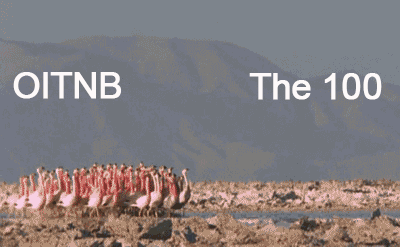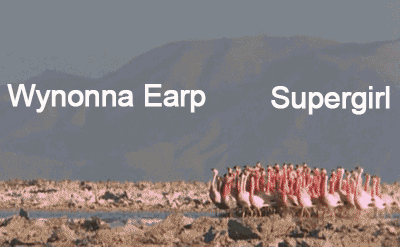Dynamic-light-scattering - DLS



More Posts from Dynamic-light-scattering and Others

2020 March 25
Star Forming Region S106 Image Credit: NASA, ESA, Hubble Legacy Archive; Processing & Copyright: Utkarsh Mishra
Explanation: Massive star IRS 4 is beginning to spread its wings. Born only about 100,000 years ago, material streaming out from this newborn star has formed the nebula dubbed Sharpless 2-106 Nebula (S106), featured here. A large disk of dust and gas orbiting Infrared Source 4 (IRS 4), visible in brown near the image center, gives the nebula an hourglass or butterfly shape. S106 gas near IRS 4 acts as an emission nebula as it emits light after being ionized, while dust far from IRS 4 reflects light from the central star and so acts as a reflection nebula. Detailed inspection of a relevant infrared image of S106 reveal hundreds of low-mass brown dwarf stars lurking in the nebula’s gas. S106 spans about 2 light-years and lies about 2000 light-years away toward the constellation of the Swan (Cygnus).
∞ Source: apod.nasa.gov/apod/ap200325.html









The Great Gay Migration continues…

2019 May 1
The Cat’s Eye Nebula in Optical and X-ray Image Credit: NASA, ESA, Hubble Legacy Archive; Chandra X-ray Obs.; Processing & Copyright: Rudy Pohl
Explanation: To some it looks like a cat’s eye. To others, perhaps like a giant cosmic conch shell. It is actually one of brightest and most highly detailed planetary nebula known, composed of gas expelled in the brief yet glorious phase near the end of life of a Sun-like star. This nebula’s dying central star may have produced the outer circular concentric shells by shrugging off outer layers in a series of regular convulsions. The formation of the beautiful, complex-yet-symmetric inner structures, however, is not well understood. The featured image is a composite of a digitally sharpened Hubble Space Telescope image with X-ray light captured by the orbiting Chandra Observatory. The exquisite floating space statue spans over half a light-year across. Of course, gazing into this Cat’s Eye, humanity may well be seeing the fate of our sun, destined to enter its own planetary nebula phase of evolution … in about 5 billion years.
∞ Source: apod.nasa.gov/apod/ap190501.html
Mahershala Ali is announced as Blade:

EVERYONE:

Steve/Peggy: *had one kiss literally 70 years ago and then both moved on with their lives*
Marvel: so cute, he would definitely abandon his life here, giving up better healthcare, equal rights and general quality of life to break up her marriage! 😍😍
Carol/ Maria: *live together, raise a child together, support each other are generally married*
Marvel: aww such a good friendship! Just gals being pals👭
Me:





That’s right. —Captain Marvel (2019)

Saturn’s moon Titan. True color (left) and with haze-penetrating near-infrared (right) as seen by Cassini in March 2017

It’s the worst 🤣👏🏽






HAPPY PRIDE MONTH!🏳️🌈🏳️🌈🏳️🌈
-
 briecheese-chet liked this · 3 years ago
briecheese-chet liked this · 3 years ago -
 chicaquepinta liked this · 3 years ago
chicaquepinta liked this · 3 years ago -
 tina-i-a-m-here liked this · 3 years ago
tina-i-a-m-here liked this · 3 years ago -
 biarmadillo liked this · 3 years ago
biarmadillo liked this · 3 years ago -
 joloveshayden liked this · 3 years ago
joloveshayden liked this · 3 years ago -
 ironicallybatman reblogged this · 3 years ago
ironicallybatman reblogged this · 3 years ago -
 ironicallybatman liked this · 3 years ago
ironicallybatman liked this · 3 years ago -
 an-artsy-girl000 liked this · 3 years ago
an-artsy-girl000 liked this · 3 years ago -
 lizzsully liked this · 3 years ago
lizzsully liked this · 3 years ago -
 childofhecate108 liked this · 3 years ago
childofhecate108 liked this · 3 years ago -
 drama-cats2468 liked this · 3 years ago
drama-cats2468 liked this · 3 years ago -
 yourworst-fucking-nightmare liked this · 3 years ago
yourworst-fucking-nightmare liked this · 3 years ago -
 bobateadaydreams liked this · 4 years ago
bobateadaydreams liked this · 4 years ago -
 billieandrade liked this · 4 years ago
billieandrade liked this · 4 years ago -
 raaaaaaaaaaaaaaj liked this · 4 years ago
raaaaaaaaaaaaaaj liked this · 4 years ago -
 lautrou liked this · 4 years ago
lautrou liked this · 4 years ago -
 the-confuzzler liked this · 4 years ago
the-confuzzler liked this · 4 years ago -
 flavoured-coffee liked this · 4 years ago
flavoured-coffee liked this · 4 years ago -
 peakysanakin liked this · 4 years ago
peakysanakin liked this · 4 years ago -
 sunflowerbia liked this · 4 years ago
sunflowerbia liked this · 4 years ago -
 littlesillyfilly liked this · 4 years ago
littlesillyfilly liked this · 4 years ago -
 jayisgay liked this · 4 years ago
jayisgay liked this · 4 years ago -
 whitherwaywill liked this · 4 years ago
whitherwaywill liked this · 4 years ago -
 nightshade-anura liked this · 4 years ago
nightshade-anura liked this · 4 years ago -
 monarchtrix reblogged this · 4 years ago
monarchtrix reblogged this · 4 years ago -
 slaylerace liked this · 4 years ago
slaylerace liked this · 4 years ago -
 my-anotherdimension liked this · 4 years ago
my-anotherdimension liked this · 4 years ago -
 argumentative-antithetical-217 liked this · 4 years ago
argumentative-antithetical-217 liked this · 4 years ago -
 specific-hux liked this · 4 years ago
specific-hux liked this · 4 years ago -
 laplupludetuvida liked this · 4 years ago
laplupludetuvida liked this · 4 years ago -
 empresseirene liked this · 4 years ago
empresseirene liked this · 4 years ago -
 trans-moth-man liked this · 4 years ago
trans-moth-man liked this · 4 years ago -
 3h08 liked this · 4 years ago
3h08 liked this · 4 years ago -
 klfastoria liked this · 4 years ago
klfastoria liked this · 4 years ago -
 mostlypencils liked this · 4 years ago
mostlypencils liked this · 4 years ago -
 coolut liked this · 4 years ago
coolut liked this · 4 years ago -
 pietrucha101 liked this · 4 years ago
pietrucha101 liked this · 4 years ago -
 iemandopdewereld liked this · 4 years ago
iemandopdewereld liked this · 4 years ago -
 relatiivity liked this · 4 years ago
relatiivity liked this · 4 years ago -
 rangubreath liked this · 4 years ago
rangubreath liked this · 4 years ago -
 windshield-laugh liked this · 4 years ago
windshield-laugh liked this · 4 years ago -
 norsespacecowboy liked this · 4 years ago
norsespacecowboy liked this · 4 years ago -
 titaniacher liked this · 4 years ago
titaniacher liked this · 4 years ago -
 scoopsohboy liked this · 4 years ago
scoopsohboy liked this · 4 years ago -
 thelittlelila liked this · 4 years ago
thelittlelila liked this · 4 years ago -
 regluv liked this · 4 years ago
regluv liked this · 4 years ago

